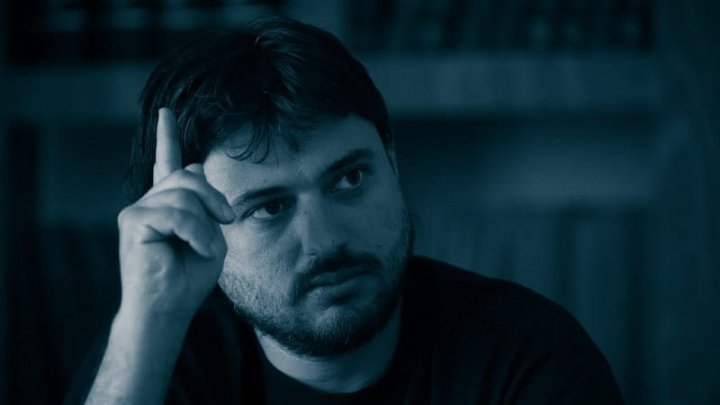
The “left” of Peronism yesterday and today. Editorial of “El Círculo Rojo”, a program from La Izquierda Diario that is broadcast on Thursdays from 10 pm to 12 midnight on Radio Con Vos, 89.9.
- At the end of last year it was published Meet Peron. banishment and return (Planet, 2022), a book by Juan Manuel Abal Medina (father). A text that circulated a lot —especially this year— in politicized spheres and that offers a meaty story in facts and characters that marked the time and its protagonists. We are essentially talking about the years 1972 – 1974between return of peron and his death on July 1 of that year.
- you will remember peron returns to the country, but the dictatorship of Augustine Lanusse had imposed a series of prerogatives that prevented from presenting as a candidate. So, Peronism designates the formula Hector Campora – Vicente Solano Lima who triumphs in the 1973 elections, his administration lasts exactly 49 days and resigns (or “they resign”, that is much discussed in the book), they convene back to elections and the formula triumphs Juan Peron – Isabel Peron.
- Juan Manuel Abal Medina was the last secretary general of the National Justicialista Movement and defines himself in the book as “a man of two worlds”: his last name had its own weight in the Peronist left: brother of Fernando Abal Medina 0, one of founders of the organization montonerosprotagonist of kidnapping and execution of Pedro Eugenio Aramburu in 1970 and a recent legend within that current. However, Juan Manuel’s political positions placed him more in the moderate sector and close to “the court”, as Héctor Cámpora called the Peron environment.
- The book is rich in anecdotes on figures whose political role in Peronism it was more a strangerlike that of the writer Leopoldo Marechal o Jose Maria “Pepe” Rosathe great intellectual of historical revisionism or the same Arturo Jauretche.
- However, for me the most interesting of the book is in some definitions that arise among the many dialogs that Abal Medina had with Perón. For example, the following: Abal Medina tells that Perón in one of those talks took out of the conversation the topics on which he had been speaking and “began a excellent summary of what happened in Argentina since the coup of 1966 onwards. He pointed to the cordobazo as a Critical moment for Peronismbecause for the first time the popular protest took place outside the movement and without the massive participation of its own leaders and militants.”
- For Perón, the outbreak that took place in the rebel cordoba in May 1969 meant a danger (and not the opportunity). Abal Medina says in his own words: “The youth radicalization that was taking place in many parts and that in Argentina had initially been capitalized on by the left through the Cordobazo and the class unionism it had had a turn towards Peronism from the Montonero uprising of 1970”.
- Indeed, in the Peron’s conception (with which the author of the book agrees), the execution of Aramburu and the emergence of Montoneros (and the Peronist left) fulfilled a specific function: no to from blaze a trail for the overcoming one’s own movement through a radicalization that leads to the “socialist homeland” (I say this because it is what thousands and thousands of militants of the Peronist left considered), but that of contain within peronism a radicalization that threatened to overwhelm him. The story that came after is already known, the tragedy of a considerable part of a generation was played out in that contradiction.
- I do not want —among other things so as not to offend anyone— to appeal to the famous phrase that says that history “the story happens twice: the first time as a tragedy and the second as farce”, although there is something of that. Let’s say better than history does not repeat itself, but sometimes it rhymes.
- In any case, the peronism it was very productive in the generation of “left tendencies” that in fact —this is even beyond the intentions of many of its protagonists— end up transformed into functional to a right turn whose consequences even those same people suffer. In fact, many and many of the leftist militants peronist were victims of triple A and the government-sponsored actions of the right that helped to elevate it.
- In a very different context and content, it is similar to the operation in progress with the list of Juan Grabois in the interior of Union for the Fatherland.
- Grabois told Carlos Pagni who was against a representative of a business group of power than pay homage to the Embassywhich is the new Rome (the reference to Massa was clear) and in Futurock he said that he was always guided by the principle “The one who wins leads and the one who loses accompanies.”
- Kirchnerism and the massismo the allowed Grabois something that they did not allow him a Daniel Scioli when asking for internals: join your ballot to the rest of the UxP candidates in deputies, governors, etc. No for democratic gesture (if not, Scioli should have received the same treatment), but because they consider it functional in Massa.
- as he wrote Diego Genoudmost likely it intends to operate as a “digestive tube” to digest Massa. A previous station on a journey that leads to the man who represents a powerful business group, who pays homage to the Embassy that is the new Rome. It seems to me that Grabois’s rejection of the proposal to debate with Myriam Bregman responds to the fact that this is very evident.
- Apart from the fights, the chicanas, the memes and everything that is part of the folklore of the electoral dispute, what is seriously at stake is the future of an Argentina that does not have the levels of radicalization of the seventies, but suffers from a crisis social with indicators that are 10 or 15 times worse than in those years. That is, in several senses the situation is worse today.
- History shows that it is not there and that most of the time the lesser evil is the fastest and safest way to the greater evil
View this post on Instagram
Politics / Sergio Massa / Peronism / Juan Domingo Perón / Juan Manuel Abal Medina / Juan Grabois
Source: www.laizquierdadiario.com

